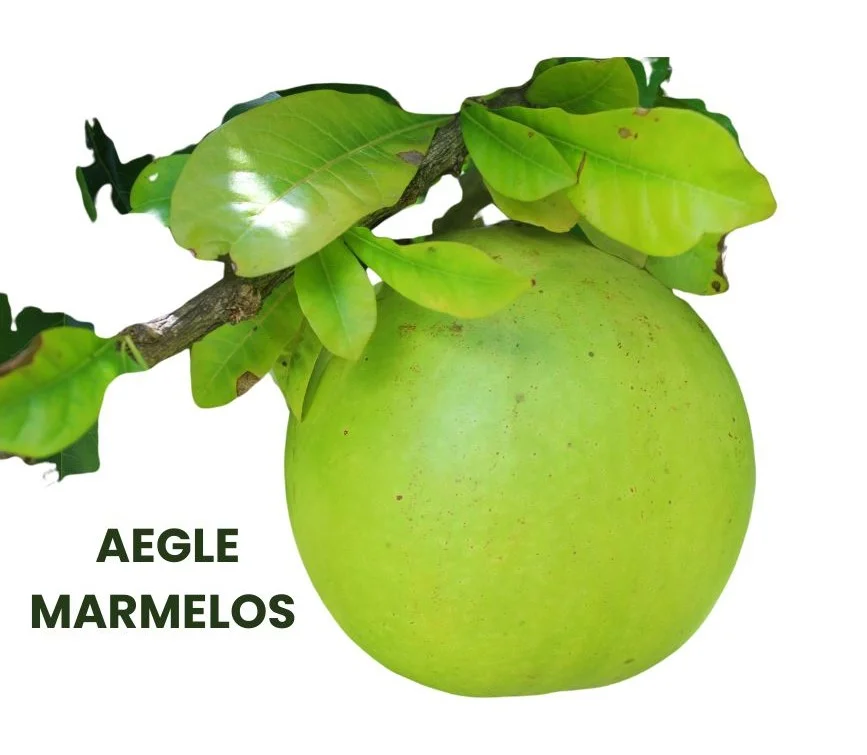Aegle marmelos, commonly known as Bel fruit, and Aegle folia, known as Bel leaves.
Native to the Indian subcontinent, these plants have significant cultural, religious, and medicinal importance.
Bel fruit is revered in Hinduism and is associated with Lord Shiva, while Bel leaves are utilized in traditional medicine systems like Ayurveda for their therapeutic properties.

Table of Contents
ToggleSOURCE INFORMATION
Scientific Classification
- Kingdom: Plantae
- Family: Rutaceae
- Genus: Aegle
- Species: Aegle marmelos (Bel fruit), Aegle folia (Bel leaves)
First Prover
- Dr. P.P. Biswas is credited as the first prover of Bel fruit and Bel leaves.
- His contributions to understanding the medicinal properties of these plants have paved the way for their integration into various traditional and modern healthcare practices.
Origin
- Bel fruit, scientifically known as Aegle marmelos, and Bel leaves, scientifically known as Aegle folia, are both members of the Rutaceae family.
- These plants are native to the Indian subcontinent and are commonly found in tropical and subtropical regions of Asia.
- Bel fruit trees are cultivated for their nutritious and medicinal fruits, while Bel leaves are valued for their therapeutic properties.
Interesting Facts
- Bel fruit is known by various names in different regions, including Sriphala, Bilwa, Bengal-quince, Bilinu-phal, and Vilwa-pazhan.
- Bel fruit holds significant cultural and religious importance in Hinduism, where it is considered sacred and associated with Lord Shiva.
- Bel leaves are used in traditional medicine systems such as Ayurveda for their medicinal properties and are believed to have cooling and astringent effects on the body.
Nomenclature
- Bel fruit is also known as Bilwa-pandu, emphasizing its association with the Bilwa tree and its juicy, nutritious fruit.
- Bel leaves are referred to as Vilwa-pazhan, highlighting their significance in herbal medicine and therapeutic applications.
DRUG PATHOGENESIS
- The therapeutic effects of Aegle marmelos and Aegle folia are attributed to their constituents, which possess astringent, antidiarrheal, anti-inflammatory, and antimicrobial properties.
- These plants act on various organs and systems of the body, exerting beneficial effects on gastrointestinal, urinary, respiratory, and reproductive functions.
- The plants’ ability to address symptoms like headache, heat flushes, and urinary discomfort suggests their influence on the nervous and circulatory systems.
CLINICAL USES
Effective for conditions such as bleeding piles, diarrhea, dysentery, fever with dropsy, and impotency.
KEY CHARACTERISTICS
Mind Symptoms: Individuals may experience difficulties in spelling and may commit mistakes in this regard.
Head Symptoms: Headache typically manifests between 4-8 p.m., accompanied by heat in the vertex, which improves after eating.
Facial Symptoms: Flushes of heat may occur in the face, eyes, and ears, dissipating after eating.
Respiratory Symptoms: Useful in treating conditions like catarrh, bronchitis, pneumonia, and cough.
Dropsy: Effective in addressing dropsy in any part of the body, including swollen eyelids and dropsical swelling due to heart diseases.
It is particularly beneficial in cases of beriberi.
Pulse: Characterized by a full, strong, and irregular pulse.
Gastrointestinal Symptoms: Indicated for indigestion, abdominal colic, piles, and constipation.
- It can also address anorexia, waterbrash, flatulence, and loud wind noises in the afternoon.
- It’s useful in amoebic and bacillary dysentery.
Urinary Symptoms: Decreased urine output, accompanied by slight pain in the back and lumbar region, worsening in the afternoon.
Male Sexual Symptoms: Useful for treating sexual impotency.
Skin Symptoms: Addresses itching and ringworm.
Fever: Used in influenza with continued fever and chronic fever associated with hepatic and splenic disorders.
POTENCY OF CHOICE
- Mother tincture, 3x, 6, 30, 200.
Frequently Asked Questions
What are the clinical uses of Aegle marmelos and Aegle folia?
- These plants are effective for treating conditions such as bleeding piles, diarrhea, dysentery, fever with dropsy, and impotency.
What are the key characteristics of these plants?
- Mind symptoms may include difficulties in spelling.
- Head symptoms manifest as headache and heat in the vertex.
- Facial symptoms involve flushes of heat dissipating after eating.
- They are beneficial for respiratory conditions, dropsy, gastrointestinal issues, urinary problems, male sexual disorders, skin ailments, and fever.
What is the potency of choice for Aegle marmelos and Aegle folia?
- The recommended potencies include mother tincture, 3x, 6, 30, and 200.
Meaning of Difficult Words
- Rutaceae: A family of flowering plants, commonly known as the citrus or rue family.
- Prover: An individual who participates in the proving or testing of a medicinal substance to understand its effects.
- Therapeutic: Relating to the treatment or healing of disease.
- Astringent: A substance that contracts body tissues, typically used to reduce bleeding or secretions.
- Antidiarrheal: Medications or remedies used to alleviate or prevent diarrhea.
- Antimicrobial: Having the ability to destroy or inhibit the growth of microorganisms such as bacteria, viruses, and fungi.
